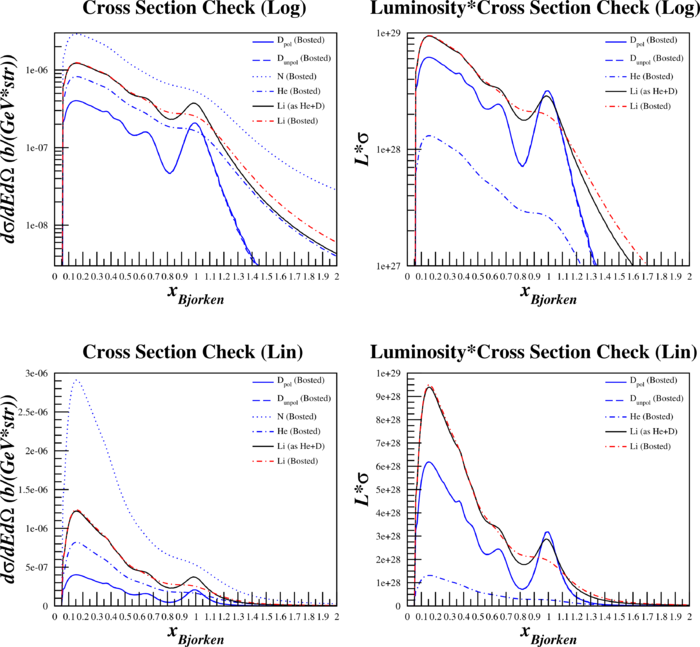Difference between revisions of "Elong-14-03-21"
| (3 intermediate revisions by the same user not shown) | |||
| Line 10: | Line 10: | ||
! He2D <br>[[Image:2014-03-21-He2D-b1.png]] | ! He2D <br>[[Image:2014-03-21-He2D-b1.png]] | ||
|} | |} | ||
| − | |||
| − | |||
=Cross Section Checks= | =Cross Section Checks= | ||
| − | + | I also looked at the cross sections and the luminosity*cross sections to see how different Li was from HeD | |
[[Image:2014-03-21-cs-check.png|700px]] | [[Image:2014-03-21-cs-check.png|700px]] | ||
| Line 29: | Line 27: | ||
|} | |} | ||
| − | For each piece (with the possible exception of the SHMS mid x point), the Li dominates slightly over the HeD, which would cause the LiD rates to come out slightly higher than the HeD rates | + | For each piece (with the possible exception of the SHMS mid x point), the Li dominates slightly over the HeD, which would cause the LiD rates to come out slightly higher than the HeD rates, but it's nearly negligible. |
| + | |||
| + | =Conclusion= | ||
| − | + | If we assume that everything that occurs during the experiment is identical except for target material, then LiD looks like it would be better suited for the b1 measurement if we could consider the Li as tightly-bound HeD, such that LiD --> HeDD. If that's a bad assumption (and everything else is the same), then we can do a better measurement with ND3. | |
Latest revision as of 09:05, 24 March 2014
LiD
I added LiD into my b1 rates calculations, since from the workshop it sounded like it might be a viable alternative for achieving higher polarization than ND3. Below are the results of ND3, LiD, and LiD-as-He2D (since lithium could be thought of as a tightly bound 4He & deuteron) in the calculations. Each calculation assumes identical target geometry (beads & packing fraction), Pzz, and detector acceptance with the only difference being the material itself.
ND3 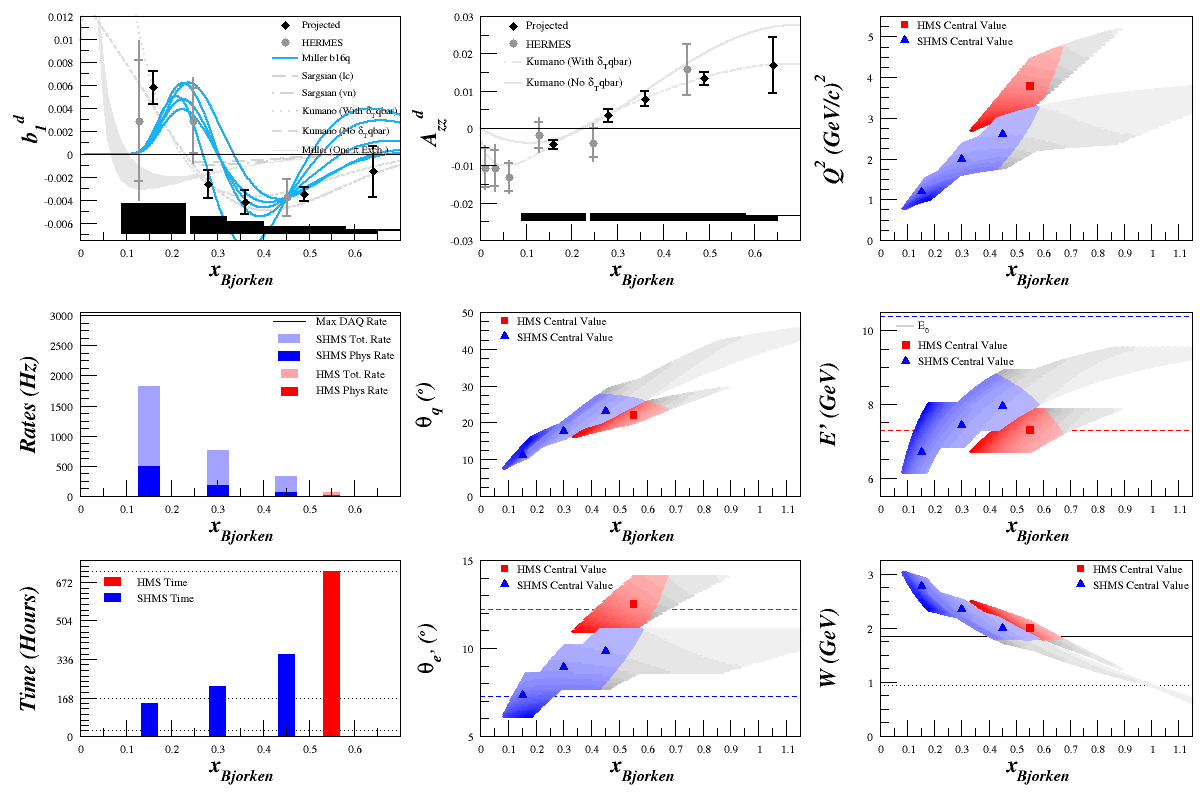
|
|---|
LiD 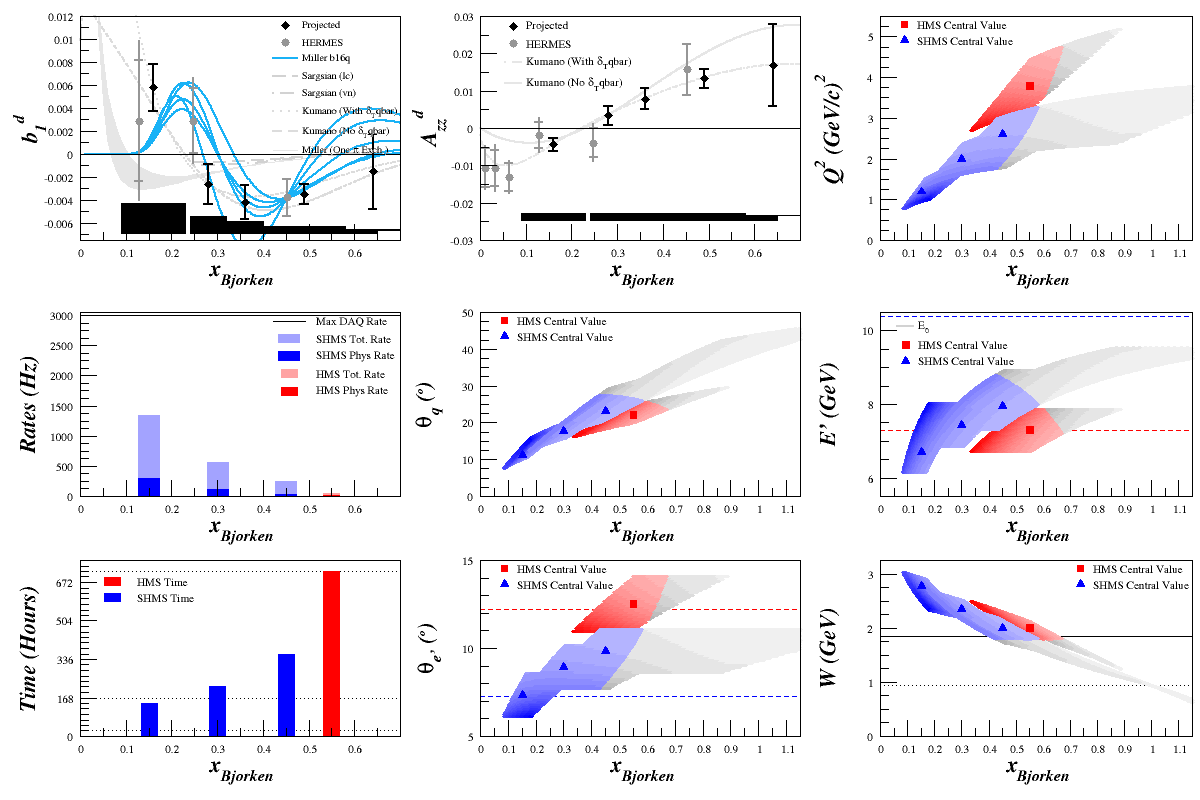
|
He2D 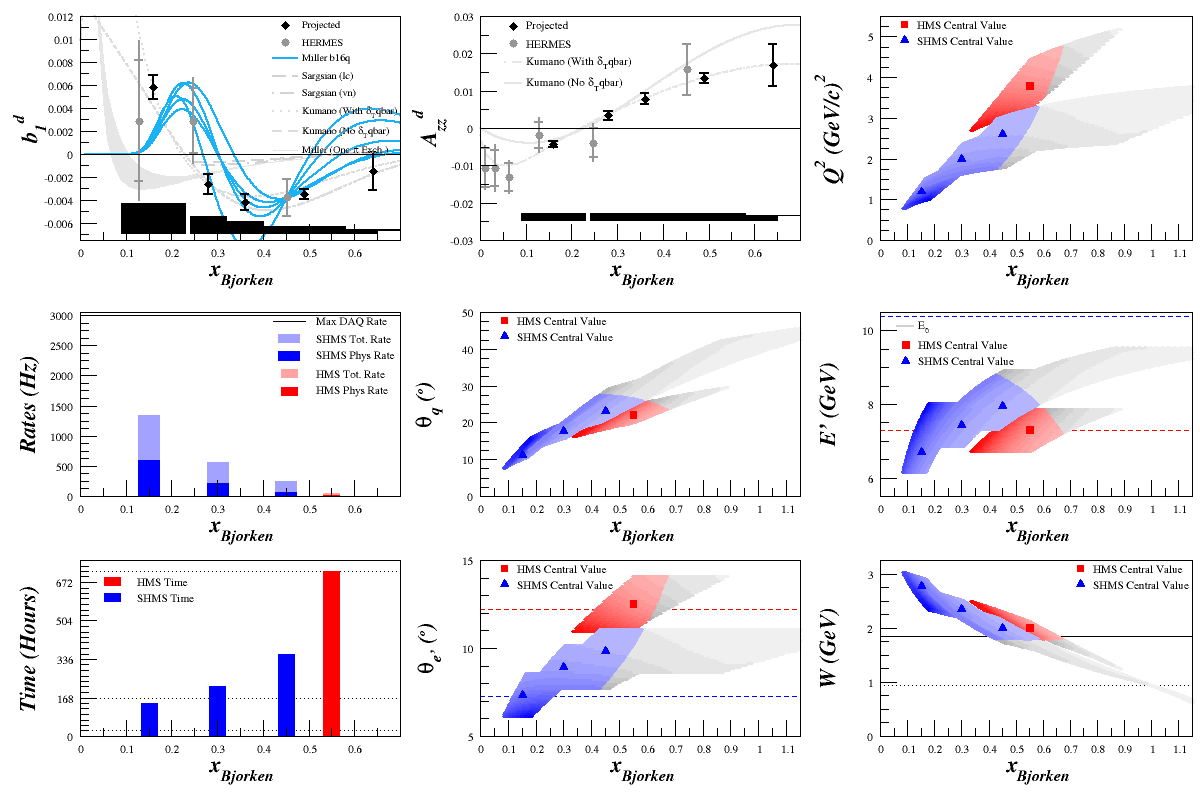
|
Cross Section Checks
I also looked at the cross sections and the luminosity*cross sections to see how different Li was from HeD
By Spectrometer
Since it's a little difficult to tell exactly where Li and HeD we overlapping for which spectrometer, I broke it down into each:
| SHMS low x | SHMS mid x | SHMS high x | HMS |
|---|---|---|---|
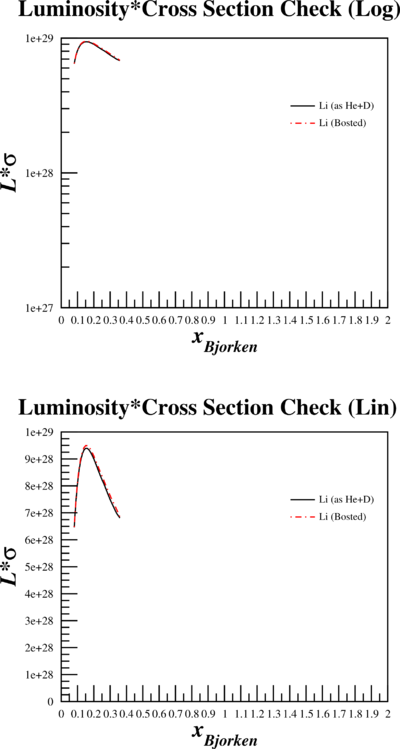 |
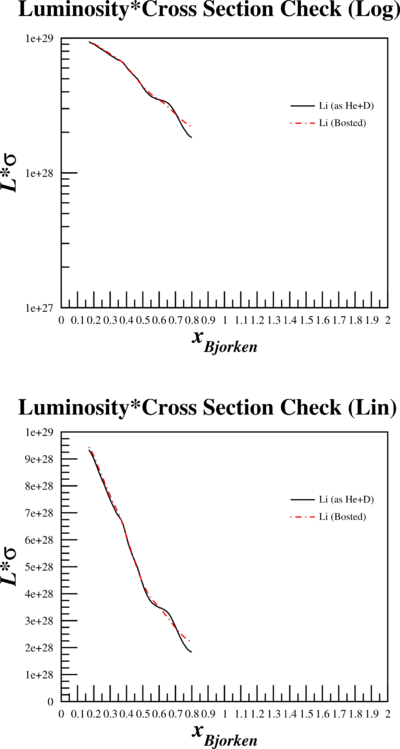 |
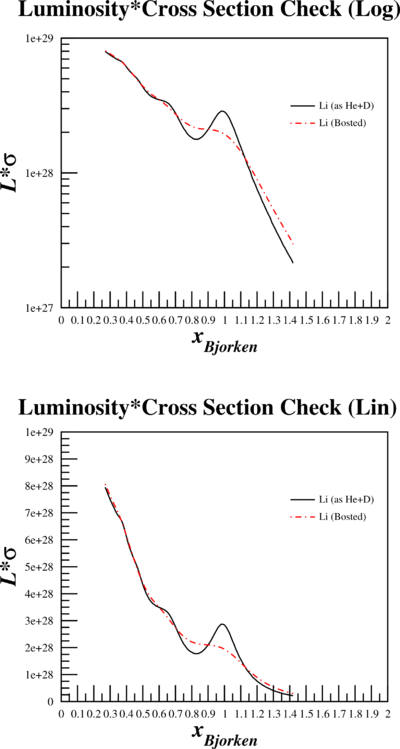 |
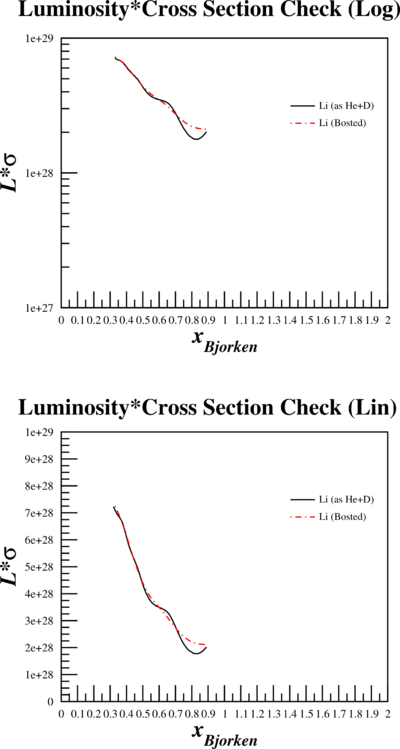
|
For each piece (with the possible exception of the SHMS mid x point), the Li dominates slightly over the HeD, which would cause the LiD rates to come out slightly higher than the HeD rates, but it's nearly negligible.
Conclusion
If we assume that everything that occurs during the experiment is identical except for target material, then LiD looks like it would be better suited for the b1 measurement if we could consider the Li as tightly-bound HeD, such that LiD --> HeDD. If that's a bad assumption (and everything else is the same), then we can do a better measurement with ND3.
